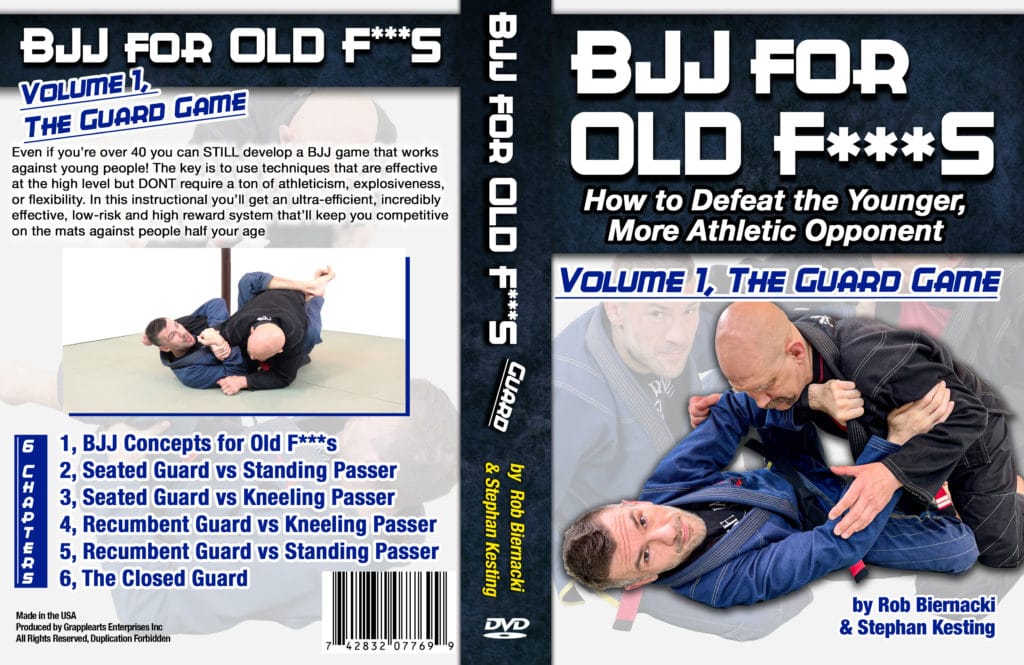Getting flattened out, crossfaced, and smashed when you’re in the half guard sucks, and in this article we’re going to learn how to prevent that from happening.
The key is to use your upper body frames to stop your opponent from getting chest to chest and flattening you out. Doing this also allows you to get back to offense from the bottom again.
First, here’s a breakdown of how not to get smashed in half guard…
Let’s review some of the main points in the video above…
The Importance of Maintaining Distance in the Half Guard
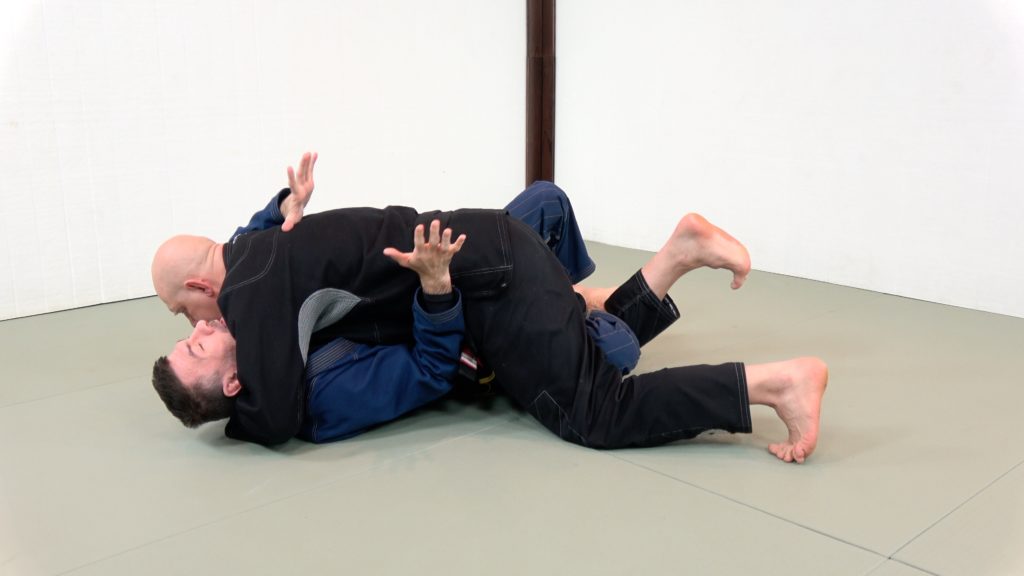
Flat and cross-faced = bad!
One of the most common ways to smash and pass half guard involves…
- Get your back flat to the mat
- Get their chest against your chest, and
- Secure a crossface and an underhoook
- And then passing from there
Achieving the first two goals allows the other guy to put pressure down onto you, limiting both your movement and your breathing. .
And then with the crossface and underhook attachment to your upper body he can turn your head away to make you ineffective, put a TON of pressure on you, and move relatively easily into guard passes and submissions.
Lower Body Half Guard Frames
Frames allow you to hold his weight up using bone instead of muscle, which means that you’ll get tired much slower (an important consideration especially if you’re an older grappler).
Ideally when you’re on the bottom in a recumbent half guard you’ll have overlapping layers of frames that make it really hard for your opponent to get a solid grip on you. Typically this will involve both upper and lower body frames.
Let’s cover two lower body frames first…
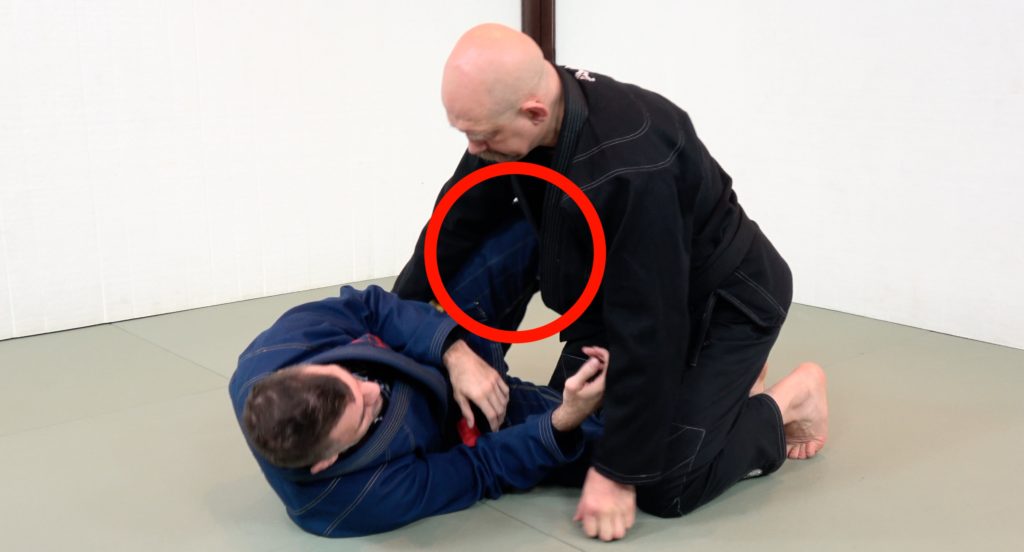
Half guard knee frame
The first lower body frame we’ll show here uses the knee of your top leg high on your opponent’s chest and shoulder area, or lower against his hipbone. Both of these places make it hard for him to put meaningful pressure down on you.
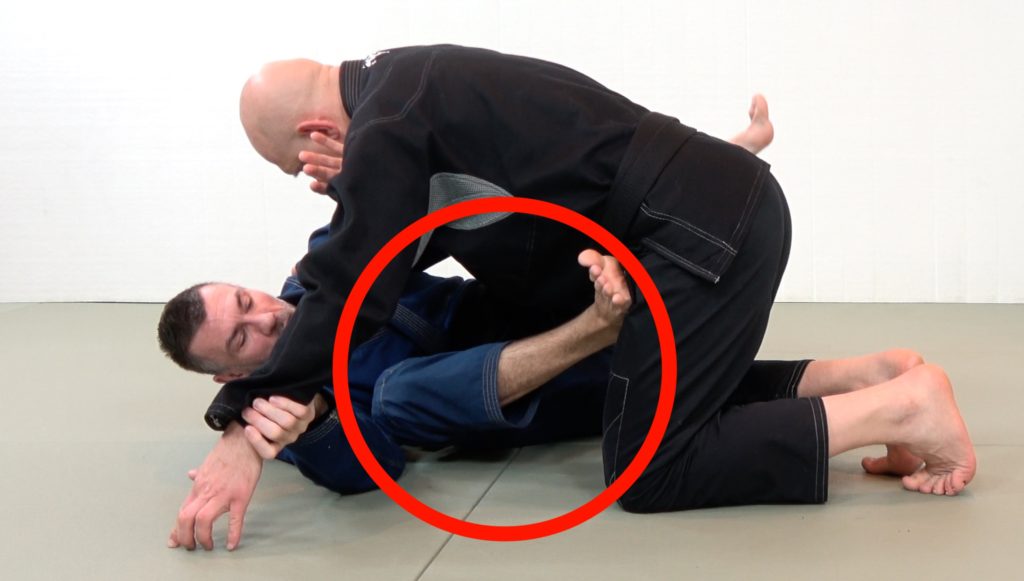
Leg frame to transition out of the half guard
You can can also bring your feet directly onto his hips to keep him at range, for example with the foot of your bottom leg as shown below. This frame is also useful if you want to switch from the half guard to the open guard.
As I said earlier, ideally we have overlapping layers of frames. But sometimes your opponent will force his way past your legs and start to threaten your upper body.
In this case it’s time to focussing on your upper body frames…
Upper Body Half Guard Frames.
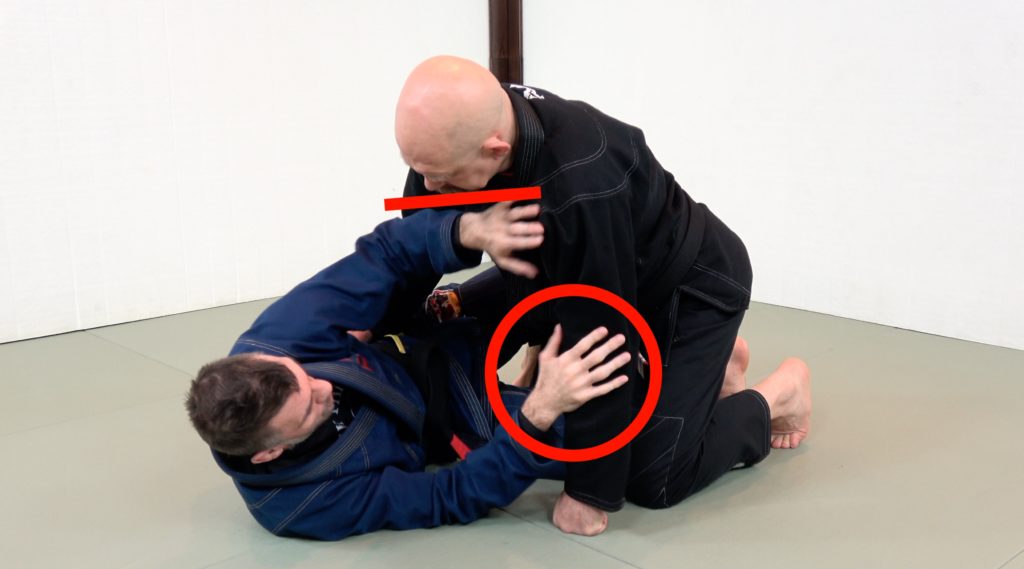
Framing with elbow, hands and forearms in the half guard
The first, and probably most common set of upper body arm frames in the half guard is pictured above.
In this situation Rob (in blue) is framing across my shoulders and throat using the elbow, forearm, wrist and hand of his top arm. His bottom hand and wrist defend against the left arm, making sure that I can’t grab his head with it.
These frames combined mean that it’s really hard for me to put meaningful pressure down onto his body.
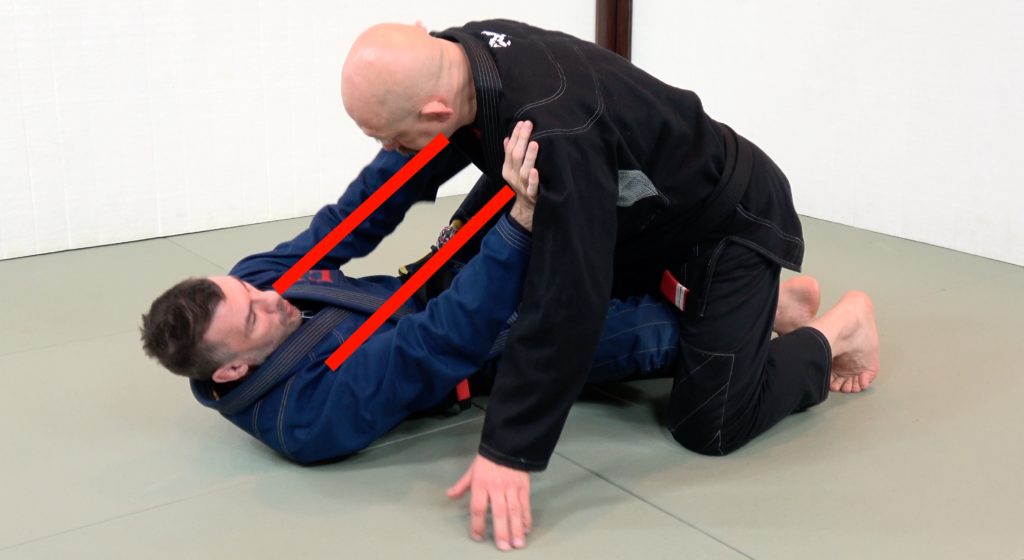
Double straight arm frame from half guard
The next upper body frame we’ll discuss is the double straight arm frame.
Here Rob (in blue) is using two almost straight arms with his hands on my shoulders to keep my weight off of him and my hands away from his head. This doesn’t take a lot of muscular strength to achieve because my weight gets transferred through the bones directly into the floor.
Note that this is a temporary position. For example you might use these frames long enough to pull your bottom (right) leg out from between your opponent’s legs and go back to the open guard.
(Not that some people might think that the man on the bottom is making the classic error of bench pressing from the bottom and exposing his arm to the armbar. This is NOT the case. Rob isn’t on the bottom of mount here; he’s entangling my right leg with his legs and thus isn’t vulnerable to the classic old-school armbar from mount.)
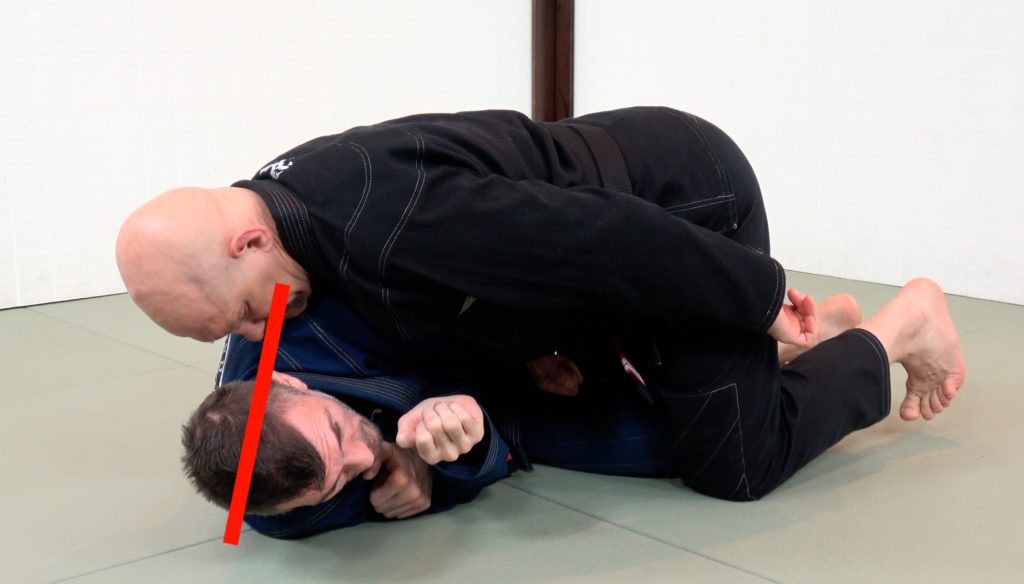
Torso frame from the half guard
Now we’re coming to the closest range frame. Your opponent has blown past your leg frames and your arm frames. He’s about to crush you. There’s one set of frames left.
You’re going to start by turning your body completely on your side. This way your opponent’s weight rests on your top shoulder, goes through your torso, and then into the mat through your bottom shoulder.
This body positioning prevents you from getting flattened and at least allows you to breath.
The trouble is that he can still use his arms to lever you flat onto your back here, so you also need to deny him the effective use of his grips…
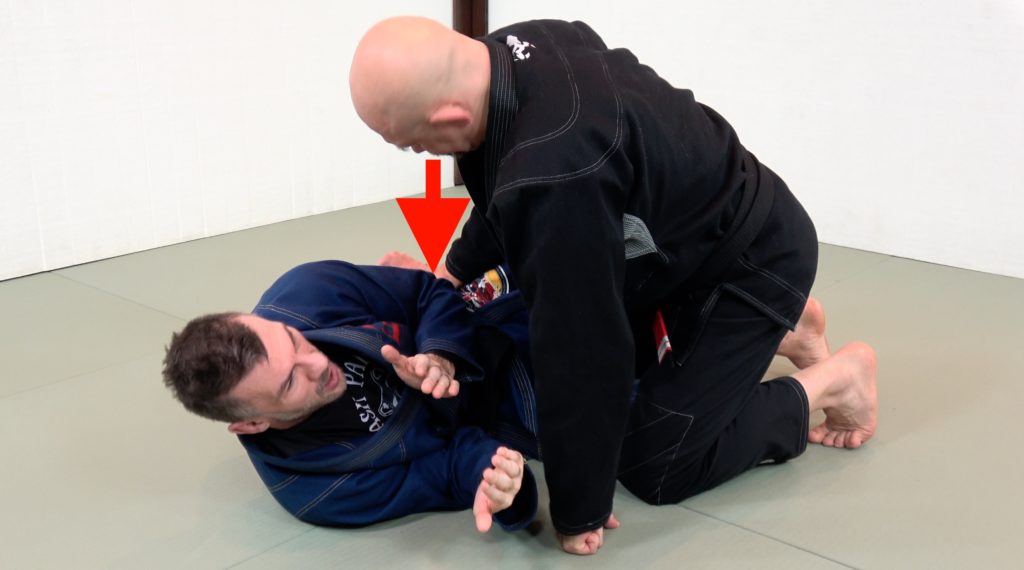
Hide the top elbow to deny the underhook
If your opponent can dig his arm underneath your top elbow then he can access the underhook. Once accessed, he can use that underhook to drive you flat onto your back. Therefore denying him the underhook is critical to an effective half guard at this close range.
One way to do this is by bringing your top elbow tight against your body and forwards so that your elbow is on the inside of your hip. Now it’s very hard for your opponent to dig under your arm.
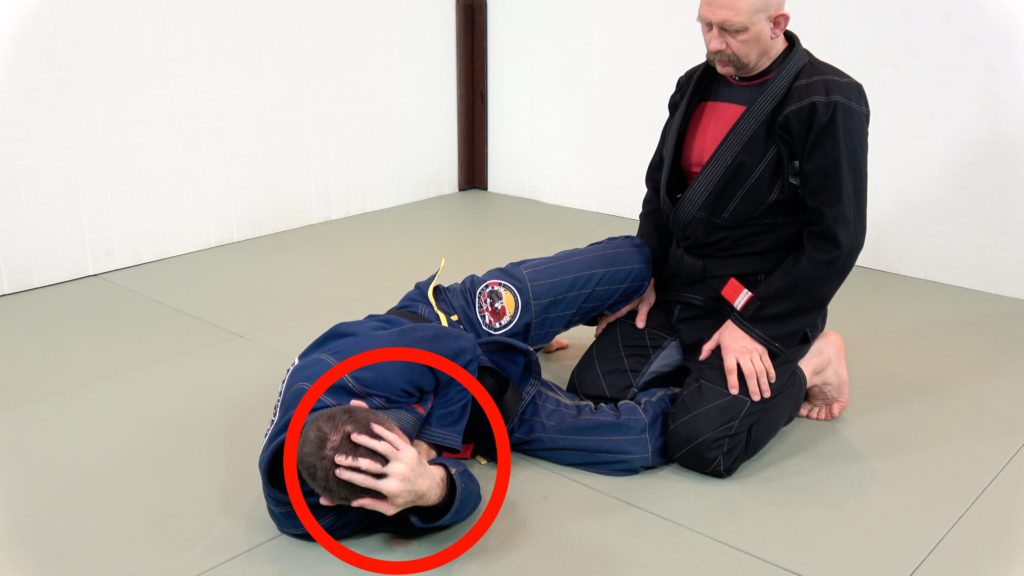
Arm frame to deny the crossface
If your opponent wants to turn you flat onto your back then he has another option too: to achieve the crossface and turn your jaw into a lever that rotates your entire body.
In the photo above Rob is creating an arm frame with his bottom arm that makes it much harder for me (on top) to effectively hook his head with my left arm. This is a ‘combing of the hair’ position that turns your arm into an effective frame.
This arm position (covered at the 3:05 mark of the video near the top of the page) will also help you prevent your opponent from attacking you with D’Arce chokes, guillotine chokes, etc.
Now it’s important to note that you’re NOT going to stay on your side with your top elbow tucked and your bottom arm framed like this forever. Remember that this is a temporary measure you’re using to prevent getting flattened out and locked down.
The goal is to reset to another guard, hunt for the underhook to threaten taking his back, or use another method to get back to the offense!
More Resources for an Efficient Half Guard
The half guard is an important guard for older grapplers, which is why it’s a big part of the BJJ for Old F***s instructional.
This material is designed for older grapplers who might have mobility challenges, have pre-existing injuries, and simply can’t scramble as fast as they used to.
Click here to find out more about this 6 volume instructional, develop a highly efficient half guard, and also pick up a whole bunch of other tricks too!
Good luck with your training,
Stephan Kesting
The post How to Defend and Counter the Crossface from Bottom Half Guard appeared first on Grapplearts.

